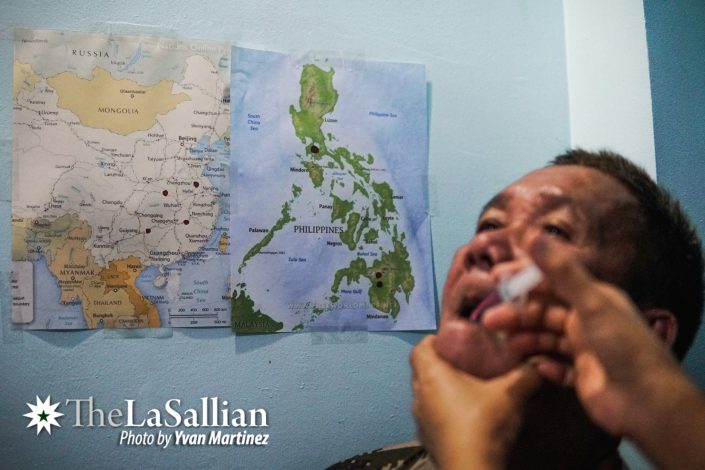“The only protection [a] community can have is [through] vaccination,” pushes Assistant Regional Director III Dr. Ma. Paz Corrales, from the Department of Health’s (DOH) National Capital Region Office, referencing the last September’s poliomyelitis outbreak.
The Philippines had been polio-free for 19 years—until a new case suddenly emerged in 2019. Now, with eight confirmed cases nationwide, officials have declared an outbreak over the country.
China, on the other hand, currently deals with the re-emergence of the plague—the same disease behind the Black Death, which killed an estimated 50 million people in 14th-century Europe, wiping out more than half of the continent’s population at the time—with its first recorded case in May last year.
Despite years of worldwide efforts to fight off and even nearly eradicate these diseases, their return inflicts renewed threats to modern society.

Understanding the threat
Poliomyelitis or polio is caused by the poliovirus, primarily attacking the nerve cells of the brainstem and spinal cord, typically of children under five years of age. Though the disease is usually non-life-threatening, it can severely degrade a patient’s quality of life, paralyzing their arms or legs—or both on rare occasions—thereby forcing some to spend the rest of their lives unable to move around independently.
As it stands, a cure has yet to be developed for polio, but preventive measures like getting vaccinated is arguably “the only and best protection against polio,” emphasizes Oyun Dendevnorov, Philippine representative for the United Nations Children’s Fund (UNICEF). He further claims, “As long as one single child remains infected, children across the country—and even beyond—are at risk of contracting polio.”
The life-threatening plague, on the other hand, is carried by rodents and fleas, which can then transmit the bacteria to other animals and humans. How it affects a patient depends on which organ the plague targets: the bubonic plague targets the lymph nodes, which are critical to one’s immune function; the septicaemic plague affects the bloodstream, often leading to blood clots and dead tissues; and the pneumonic plague is most fatal, infecting the lungs and eventually depriving the blood, and the rest of the body’s organs, of oxygen.
Cause and effect
Lapses in public health practices seem to be the main culprit for these diseases’ reprisal. Most of the recent polio cases in the country were caused by limited immunization and poor sanitation within the affected regions, primarily in poorer barangays within Metro Manila, Lanao del Sur, and Davao.
Corrales enumerates some of the factors that may have led to the outbreak: misconceptions toward vaccination, deviating from the proper vaccination schedule, and practicing open defecation. The poliovirus from feces left out in the open environment can easily contaminate food and water supplies, allowing the infection to spread especially for residents who live in close-knit communities with poor sanitation.
On the other hand, the Mongolian couple in China, who were afflicted with the bubonic plague and eventually died, met misfortune in trying a local folk remedy: believing it would bring them good health, they had ingested the raw kidney of a marmot, a rodent common in the region, that turned out to be infected with the bacteria.
With the plague being classified as endemic to countries like Madagascar, Peru, and the Democratic Republic of Congo, the recent recurrence of cases have not yet been classified as an international emergency. Nevertheless, the World Health Organization (WHO) strongly pushes to give significant attention to the disease by maintaining surveillance and coordinating with government health agencies from different countries—particularly those facing outbreaks—to minimize new cases from emerging.
Combating outbreaks
According to Corrales, critical interventions are underway to halt further polio transmission. In areas where wastewater samples tested positive for poliovirus, monitoring is routinely conducted to detect cases of acute flaccid paralysis—characterized by the partial or full inability of muscles to contract—a known symptom of polio. Several rounds of supplemental immunization efforts are also being administered to certify an area’s polio-free status.
Further, not long after the outbreak, DOH launched a nationwide polio vaccine campaign to address the pervasive anti-vaxx sentiment. “We also started using social media in our advocacy strategy, and [allocated funds] for television, radio, and newspaper advertisements,” Corrales discloses, recognizing the power of mass media in disseminating information and influencing people’s perspectives.
Similarly, WHO promotes early detection of the plague by examining patients potentially vulnerable to the disease—determined by assessing external factors such as overpopulation, poor sanitation, and poor pest control—so that they can immediately start the appropriate treatment procedures.
As for prevention, WHO advises people to avoid direct contact with animal carcasses and minimize contact with fleas, which may be carriers of the plague-causing bacteria. The organization also encourages the investigation of these carriers to better understand the bacteria’s life cycle and development in different organisms, in hopes of preventing further transmission to humans.
The re-emergence of plague and polio in areas that were thought to have bid farewell to such diseases remains quite a blemish in the progress humankind has seen in biomedicine and healthcare. Yet most modern societies are equipped with the ability to mitigate, even fully eradicate, the recurrence of these diseases. Individuals and communities only need to support the full implementation of such medical interventions—offering medicines, vaccines, and healthcare professionals a chance to properly do their work.
